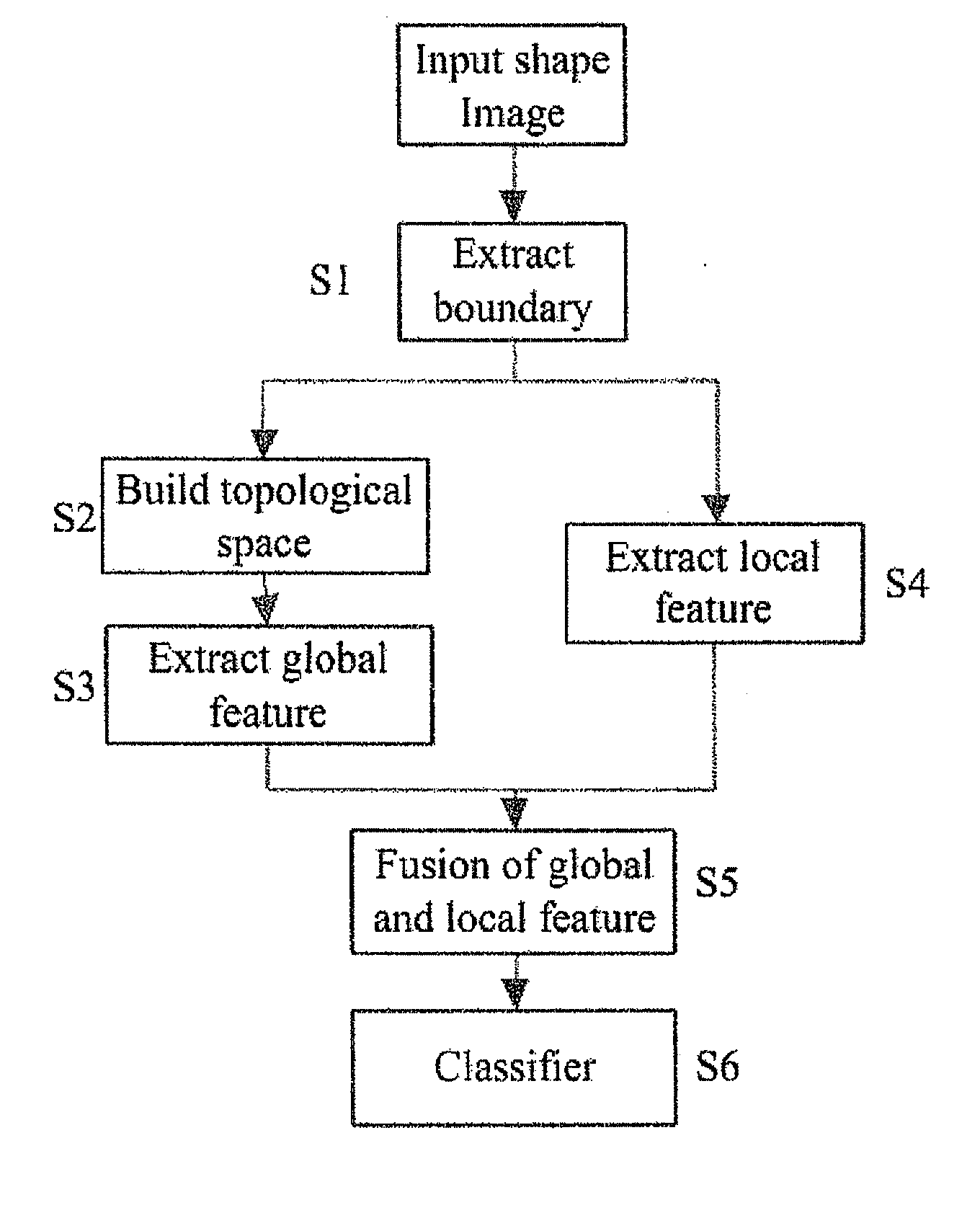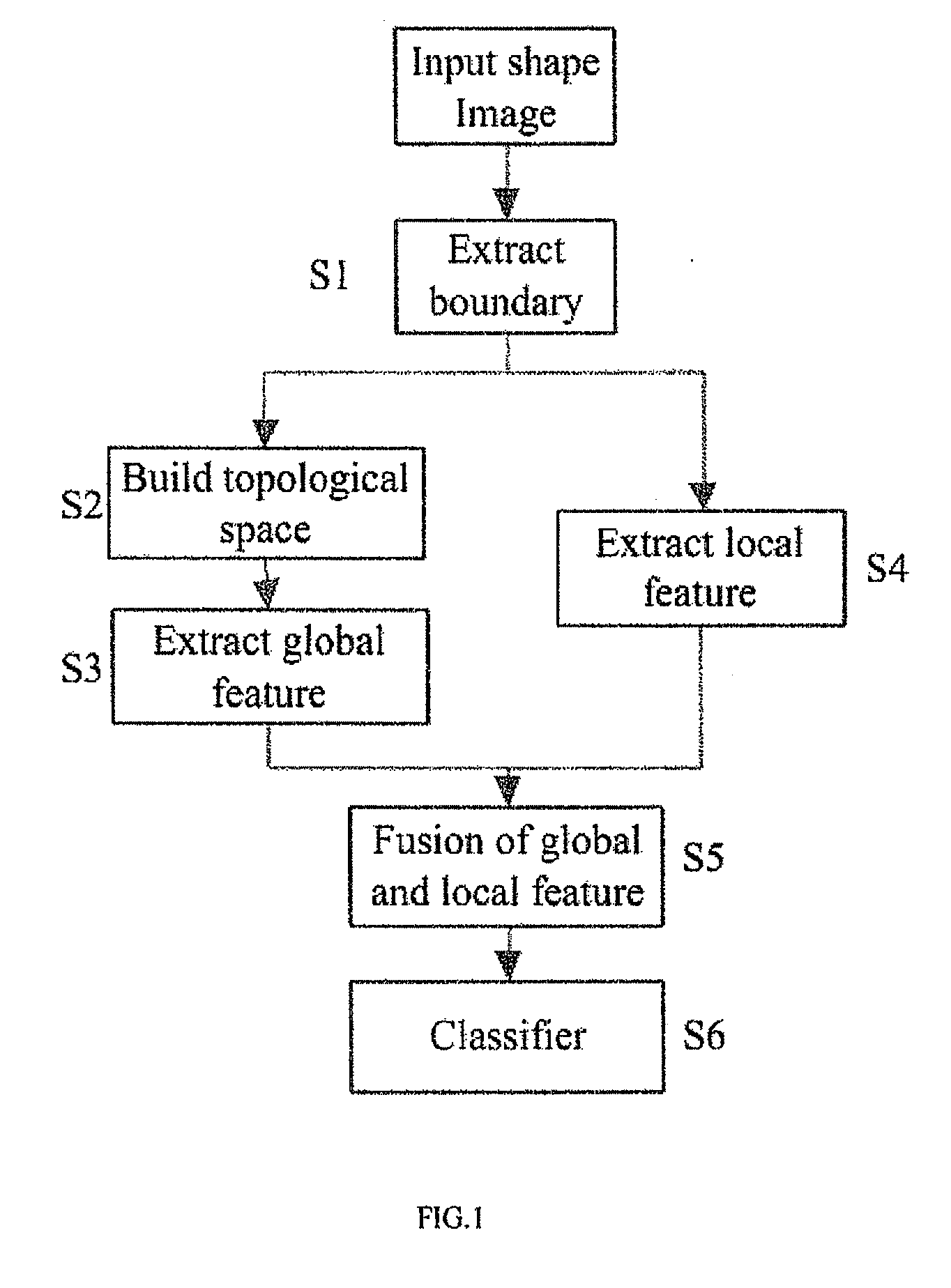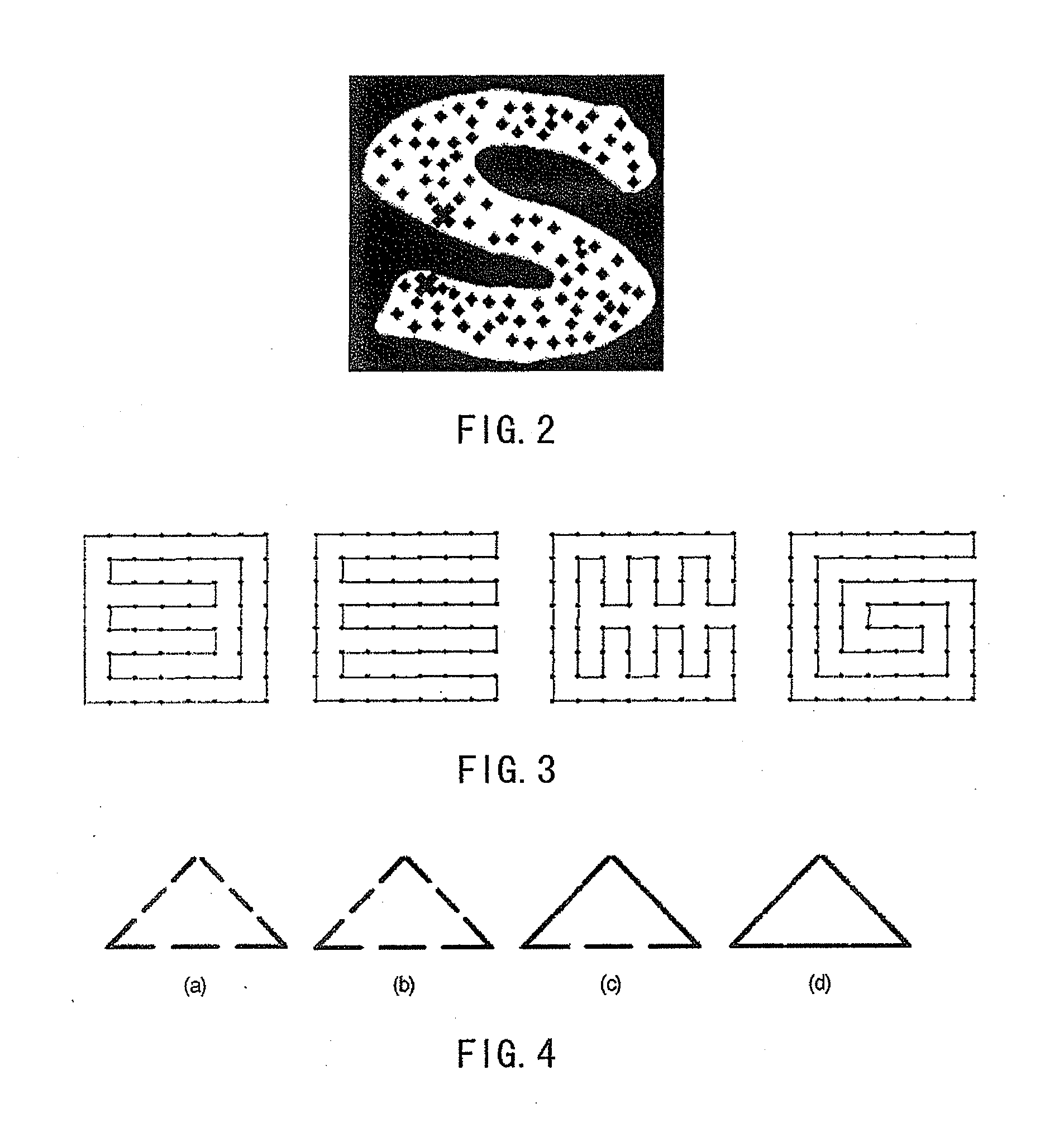Shape classification method based on the topological perceptual organization theory
a classification method and topological perceptual organization technology, applied in the field of pattern recognition, can solve the problems of lack of cognitive motivation, difficult to incorporate global features into local features based shape classification, and inability to achieve cognitive motivation, etc., and achieve the effect of enhancing the intelligence of the system
- Summary
- Abstract
- Description
- Claims
- Application Information
AI Technical Summary
Benefits of technology
Problems solved by technology
Method used
Image
Examples
embodiment
[0047]In order to demonstrate the embodiment of the invention, we construct a database (see FIG. 6). Following the above mentioned steps, we test the performance of our proposed shape classification algorithm based on the topological perceptual organization theory. Steps are stated as follows:
[0048]Step S1: Extract boundary points from shapes using the Canny edge detector;
[0049]Step S2: Construct topological space using equation (1) and equation (2) and then compute the distance of the extracted boundary points in topological space;
[0050]Step S3: Extract the global feature from representation of boundary points in topological space using equation (3) and equation (4);
[0051]Step S4: Extract the SIFT feature from representation of boundary points in Euclidean space and adopt it as the local feature;
[0052]Step S5: Combine the global feature and the local feature using equation (5);
[0053]Step S6: Classify shapes using the final distance of shapes defined in equation (5). Afterwards, we ...
PUM
 Login to View More
Login to View More Abstract
Description
Claims
Application Information
 Login to View More
Login to View More - R&D
- Intellectual Property
- Life Sciences
- Materials
- Tech Scout
- Unparalleled Data Quality
- Higher Quality Content
- 60% Fewer Hallucinations
Browse by: Latest US Patents, China's latest patents, Technical Efficacy Thesaurus, Application Domain, Technology Topic, Popular Technical Reports.
© 2025 PatSnap. All rights reserved.Legal|Privacy policy|Modern Slavery Act Transparency Statement|Sitemap|About US| Contact US: help@patsnap.com



